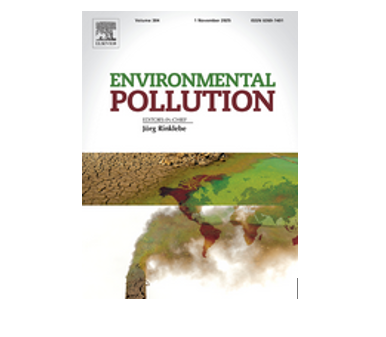- Home
- Dipartimento
- Ricerca
- Didattica
- Post Lauream
- Servizi e strumenti
- Trasferimento della conoscenza
Interessante Pubblicazione dal Titolo Quantifying Anthropogenic Microparticle Contamination in Cave Sediments: Spatial Heterogeneity Matters
Tipologia news:
home
I ricrecatori del DSV Manuela Piccardo, Raffaele Bruschi, Tecla Bentivoglio, Serena Anselmi, Monia Renzi, Lucia Gardossi, Stanislao Bevilacqua hanno pubblicato sulla prestigiosa rivista Environmental Pollution un interessante lavoro dal titolo Quantifying anthropogenic microparticle contamination in cave sediments: spatial heterogeneity matters.
Qui di seguito un riassunto dell'articolo.
Abstract: Anthropogenic microparticle pollution is a pervasive phenomenon affecting even remote environments, such as natural caves. Despite potential impacts on these fragile and valuable underground ecosystems, data on microparticle concentration in natural caves still remain sparse and often based on limited sampling and insufficient spatial replication. In this study, a hierarchical sampling design including large (between caves, 1000 s m), medium (subareas within caves, 10 s m), local (stations within subareas, 100 s cm) and small (among replicates, 10 s cm) scale, was implemented to identify patterns of spatial variation in microparticle contami nation of surface sediments from two caves in the Classical Karst (NE Italy). Suspected anthropogenic micro particles were detected in all samples, with an average concentration of 90.9 items kg- 1 dry weight, predominantly transparent particles (>34.9 %), often fibers <1 mm (49.9 - 58.1 %). Most of the items (94.5 %) were microplastics made of PP (45 %), PET (35 %), and PE (20 %), whereas the remaining microparticles consisted of non-plastic items, including unknown cellulose (5 %) and anthropogenic cellulose (0.5 %). The total number of microparticles, their type, and relative abundance significantly varied at the scale of subareas, while no significant variations were detected at the scale of stations and between caves. In all cases, subareas and replicates primarily contributed to the total variability (11 - 20 % and ≥80 %, respectively), highlighting smalland medium-scale heterogeneity as the most relevant sources of spatial variations of microparticle contamina tion. As a number of factors, from varying contamination sources to the geomorphological complexity of caves, may affect dispersal and accumulation of microparticles in environmental matrices, our findings stress the need for more structured sampling designs to quantify the intrinsic spatial variability of microparticles in order to obtain reliable estimates of contamination in cave environments.

Ultimo aggiornamento: 07-10-2025 - 16:53



